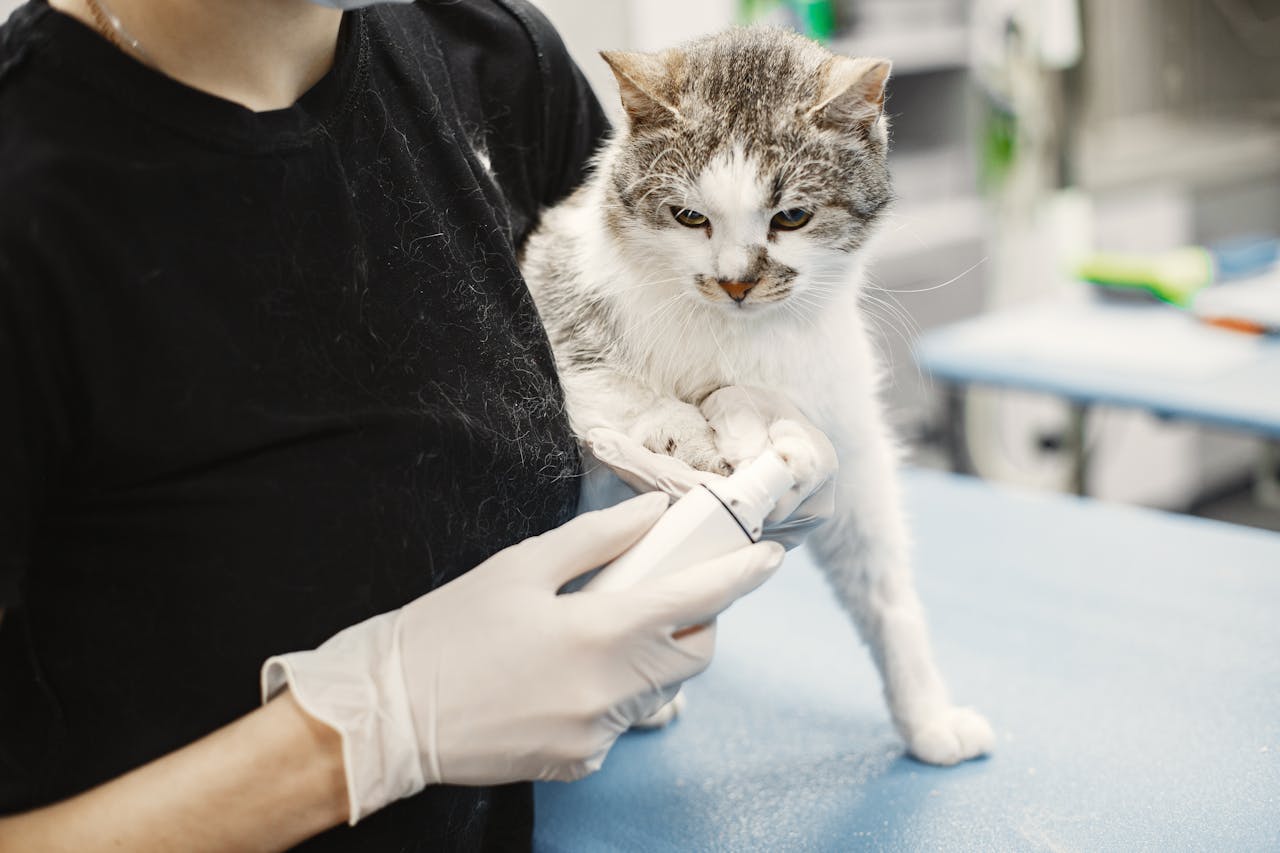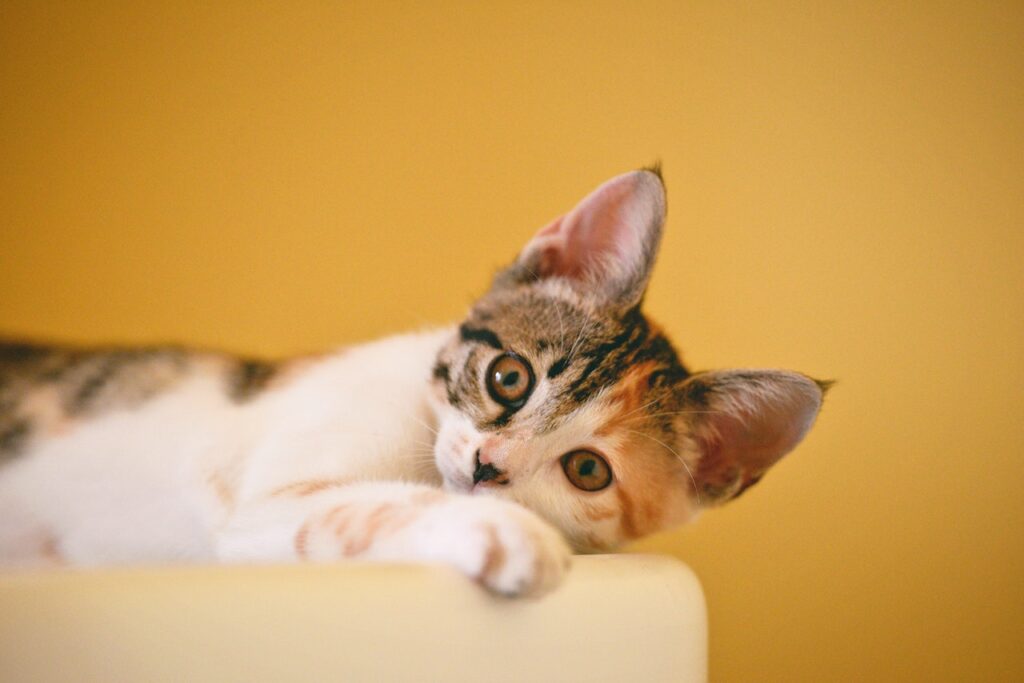Cat Care

There is little more exciting than bringing home a new furry family member. Whether you’ve bought a kitten or rescued an older cat, you might just be expecting soft cuddles and sweet purring from your new feline friend.
While this is a big part of what makes cats such loving companions, there is a lot more that goes into being a responsible cat owner than showering them with pats and cuddles.
The First Steps of Cat Care
Step One: Preparation
Before you bring your fur baby home, you need to make sure your home is set up for them and that you have a safe way to get them home. Some essential items include:
A Litter Box & Scoop
Cats like to be clean at all times. As a result, cats can easily be toilet trained if a litter tray filled with dry earth, sand, or cat litter is available. The litter tray should be cleaned daily to remove faeces, and the litter itself should be changed frequently. Ensure the litter tray is placed in a quiet and private location. You may even need multiple trays if you have more than one pet cat. A good rule of thumb is one tray for each cat plus one extra.
A size-appropriate cat carrier
This will make for easy transportation to and from your local vet.
Food and Water Bowls
Ensure a fresh water bowl is accessible at all times, especially if they have a dry food diet. Whilst many cats love to drink cow’s milk, it’s not recommended as they can be lactose intolerant and experience stomach upsets.
Collar With The Cat’s Name and Your Number
This does not only mean that if your cat gets lost, you, as the cat’s owner, can be traced, but it also makes it clear that your cat is a pet and not a stray cat.
The Right Cat Food For Your Cat’s Breed, Size, and Age
Most cats are grazers, so we recommend feeding small amounts often. They require a high protein and fat diet. There are many formulations of cat food available, and we recommend discussing your cat’s individual nutritional needs with us to choose the most suitable formula. Raw chicken wings/necks are excellent for maintaining good dental health. Talk to your veterinarian about which food is suitable for your cat.
Scratching Post or a Cat Tree to Keep Them Busy
All cats need to exercise. As cats naturally like climbing and perching themselves up high, trees and fences, for example, provide good opportunities for them if they have outdoor access. Indoor cats, however, will use furniture to climb and perch. Having a scratch pole or indoor cat gym will give an indoor cat an effective alternative. Providing higher perching locations will also give your cats a more enriched environment. This will also reduce the chances of your furniture being scratched.
A Bed For Your Cat to Have Their Own Space
A cat’s housing needs are simple. While they will usually find a corner that suits them best indoors or outdoors, please provide them with a basket, box, or chair in a place where they feel safe and protected. Increasingly, people are using cat enclosures for outdoor cats. Placed in a weatherproof area, they keep them safe from neighbourhood cats and protect local wildlife. Indoor cats generally live longer and lead healthier lives.
Grooming
Most cats require grooming assistance from their owners to remove excess hair. This helps in the reduction of furballs/hairballs and matted/tangled fur, which, if left, may result in a visit to us. Except at moulting time, short-haired cats are able to groom themselves adequately. In contrast, long-haired cats require daily grooming by their owners. Furballs or hairballs can cause appetite and weight loss and, in a worst-case scenario, result in surgery. During the moulting season, daily brushing is essential, and food designed specifically to assist with the reduction of hairballs will also help your cat process shed hair. Unlike dogs, you should not need to bathe a cat.
Toys for entertainment and enrichment
One of the most rewarding things for passionate cat owners is seeing their cats having fun and playing happily. Cat scratches on the furniture, on the other hand, can be highly discouraging. Cat toys come in various styles to keep your cat’s claws busy and their minds entertained. Your local pet store or vet will have a variety of cat toys and entertainment to keep your cat stimulated. This is particularly important if you’ve got an indoor cat.
Step Two: Cat Wellness Examination
No matter where you’ve sourced your cat or how old they are, getting a check-up with your vet as soon as possible is essential. If your cat isn’t desexed, booking the procedure imminently is an important part of being a responsible cat owner.

Regular Health Checks
Cats require a minimum of one health check per year. Regular visits help us diagnose, treat or even prevent health problems before they become life-threatening. Routine vaccinations, worming and flea control, form the basics of feline medical care. We can also provide additional guidance on nutrition, behaviour, training and life-stage treatments available.
We welcome you to visit us or call to discuss how to keep your cat in optimum mental and physical health.
Step Three: Settling in
Bringing home a new cat is rarely without its challenges. They will likely be stressed and confused about their new whereabouts, with new sights and smells to get used to, especially if you’re adopting an older cat. Signs of stress in a cat can include a refusal to eat, decreased grooming, and a lack of interest in affection and hiding. If the cat is very stressed, it may even escalate to aggression. Generally, you can help the cat lower its stress levels every day with patience and understanding. However, if you don’t notice the cat’s stress levels beginning to decrease, it might be time to seek help from a vet or behaviourist.
Some things you can do to help your cat settle
- Begin their introduction to your home by sitting in one room with them, and keep them confined to that room until they get used to the smells and sounds of your home.
- Start any introductions to other pets very slowly, keeping them separated and giving them lots of time to sniff.
- Provide many hiding places and spots where the cat can retreat to be alone, such as cardboard boxes or cat trees.
- Transfer their scent to their bed, tree, and toys by patting them with a blanket and then rubbing the blanket on the objects.
- Don’t force affection or let children overwhelm the cat; let the cat come to you by holding a toy or treat and calling them.
- Allow several weeks for them to adjust and slowly explore your home
- Try to maintain your cat’s previously established routine as much as possible.
Things to Consider
Cats can make excellent companions and are wonderful pets. However, with an average lifespan ranging from 15-20 years, owning a cat is a long-term commitment, and their needs must be carefully considered.

Every cat is different; some will love their independence, spending their days in their favourite patch of sun, and others will be more needy, taking up residence as your living lap warmer whenever you sit down. It’s difficult to predict what kind of cat your kitten will grow into, and if your adopted cat has a history, you will need to be willing to adapt to suit their personality. Cats are absolute individuals with their own personalities, opinions, and ideas. Adjusting your expectations and knowing what makes cats tick will set you and your cat up for a happy life together.
Bringing a new cat home can quickly go from exciting to overwhelming, particularly if you’re not set up with the right expectations and tools for success. Starting your relationship with your vet early can be one of the best ways to set your family and your new fur baby up for success. Our experienced and friendly team is here to help you and your cat bond and start your new life together.
Give us a call at (02) 9606 6984 or visit us to have your cat check-up today to start your journey to responsible and enjoyable cat ownership.
